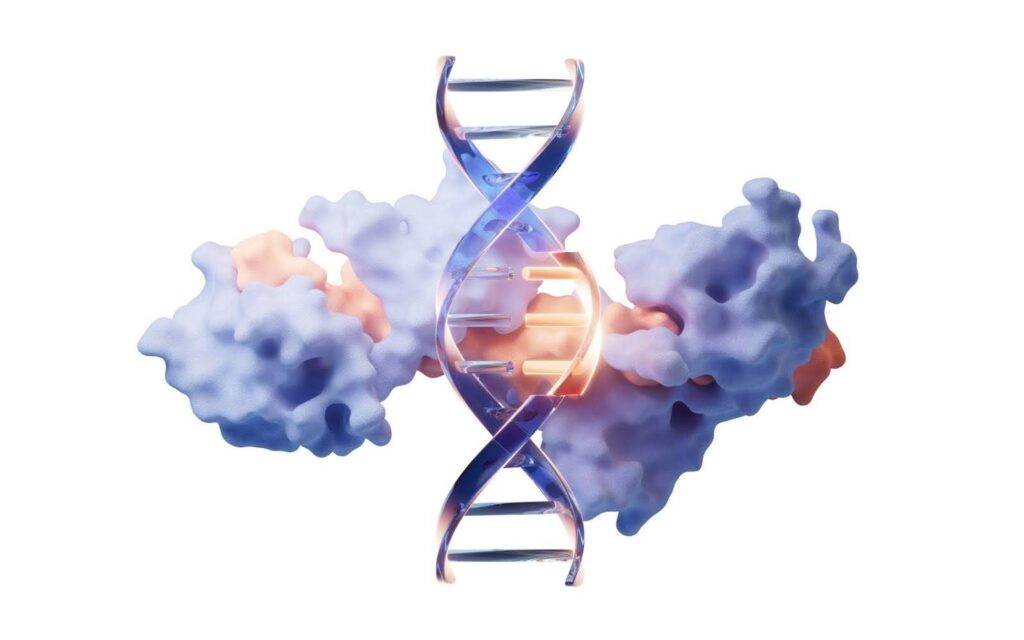BICO News Feed
Discover the latest news from our business areas.
- July 12, 2024
- 8:29 am
Gene Editing in Cell Line Development: Cutting-Edge Approaches
Share on facebook
Share on twitter
Share on linkedin
Gene Editing in Cell Line Development: Cutting-Edge Approaches
Advances in gene editing have revolutionized biomedical research and cell line development. New techniques are changing how we approach drug discovery and therapy production, from enhancing the stability and productivity of monoclonal cell lines to creating precise disease models1. Techniques like clustered regularly interspaced short palindromic repeats (CRISPR)-Cas9 and prime editing are setting new standards for efficiency and accuracy in cell line engineering, paving the way for innovative treatments and research breakthroughs. In this article, we will discuss the role of gene editing in cell line development, including applications, gene editing technologies, and common challenges associated with these techniques in cell line engineering.
The Power of Gene Editing
Gene editing continues to transform biomedical research and clinical practice. It allows cells to be adapted for a virtually limitless array of new functions and provides the basis for corrective therapies for genetic disorders. New gene editing and cell line engineering technologies are constantly emerging, allowing these techniques to impact a growing number of biomedical applications.

Applications
Gene editing in cell line development impacts the entire drug discovery pipeline, especially in therapy production and early-stage research.
Therapy Production
Monoclonal cell lines produce many important therapies, such as monoclonal antibodies and complex molecules. Gene editing in cell line development allows for increased target protein production and can boost cell line stability and proliferation (Fig. 1). It also facilitates the production of universal donor cells, which are modified to reduce the chances of rejection by the host 2. This includes the production of off-the-shelf Chimeric Antigen Receptor (CAR)-T cells, a cutting-edge therapeutic tool for many cancer types. These techniques rely on the establishment of pure monoclonal cell populations. Single-cell dispensing using the UP.SIGHT from CYTENA ensures a >99.99% probability of clonal derivation, eliminating the need for expensive sequencing techniques to prove monoclonality to regulatory bodies.

Figure 1. Gene editing is central to improving the production and functionality of therapeutic proteins.
Research
Gene editing can be used to create disease models and study gene function in many disorders. Gene editing is often used in induced pluripotent stem cells to generate isogenic controls or introduce a disease-causing genetic variant. Gene editing can also validate drug targets, laying the groundwork for further drug development.
Methods for Gene Editing
Gene editing methodology has evolved rapidly over the last decade. The advent of advanced techniques like CRISPR and transcription activator-like effector nucleases (TALENs) means gene editing can be more readily applied to improve patient clinical outcomes. Cell line optimization is an active area of research that aims to produce the best-performing clones for therapeutic applications. Gene editing is a core technique used for this purpose.
CRISPR-Cas9
This gene editing technique has impacted biomedicine more than any other. It works by using a guide RNA to direct a bacterial nuclease called Cas9 to a specific sequence within the genome. The nuclease causes a double-strand break in the host DNA at a user-defined site. This break results in the desired genetic modification being introduced. CRISPR has been used to modify Chinese hamster ovary (CHO) and hybridoma cells, which are commonly used to produce biological therapies. For instance, CRISPR has been used to knock out genes that interfere with antibody production by directing cellular resources away from production or by reducing cellular growth during production3,4. CRISPR screens help to identify additional genetic targets to improve target protein yield3. As a result, CRISPR-Cas9 speeds up the creation of high-yield, resilient cell lines, greatly enhancing the production of biopharmaceuticals.
TALENs
This technique works by fusing a transcription activator-like effector (TALE) with a bacterial nuclease called FokI. The TALE is modified to recognize and bind to a specific DNA sequence, allowing the nuclease to make a double-strand break at the predetermined site. TALENs technology has been used to produce off-the-shelf adoptive t-cell immunotherapies 5, modify antibodies to improve binding6, and was famously used to treat the leukemia of a young girl in 2015.
Zinc Finger Nucleases
This approach works similarly to TALENs, but instead of a TALE to direct the Fokl nuclease to a specific site, it uses zinc finger DNA-binding domains. In cell line development, zinc finger nucleases are used to silence genes that promote death in CHO cells7 and facilitate modifications to antibodies that enhance their therapeutic function8.
Base Editing
This technique allows for a base change at a specific genomic location. It uses CRISPR-guided RNA to direct a base editing deaminase enzyme to a particular site. Base editing has been used in CAR-T cell technologies, among other leading technologies9.
Prime Editing
This technique uses prime editing guide RNA (pegRNA) to direct a fusion protein consisting of a nickase (a type of nuclease) and reverse transcriptase to a specific genomic site. The pegRNA also encodes genetic information that is reverse-transcribed into the DNA site after the nickase creates a single-strand nick. This allows the integration of precise DNA sequences at specific sites10. Prime editing is a relatively new technique compared to those mentioned above and has not been employed as extensively. However, it holds incredible promise for allowing scientists to optimize cell line development by inserting precise DNA sequences.
Challenges
Gene editing is not a perfect process and is prone to several challenges that slow down workflows. Common problems include off-target edits and difficulty delivering modification machinery into cells. Let’s look at some more challenges of gene editing in cell line development.
Validation
Researchers must ensure that their clonal cell line is carrying the desired genetic modification before progressing. Sequencing is typically used to validate that the correct modification has been achieved at the desired genomic location, and is often employed in the development of modified stem cell lines. Failure to validate gene editing can lead to significant time loss in cell line development.
Regulatory Compliance
Genetically modified cells face stringent regulatory hurdles. Central to this is the requirement that scientists prove the clonal derivation of their cell lines. The UP.SIGHT from CYTENA solves this problem via dual imaging technology that lets scientists easily prove clonality to regulators (Fig. 2).

Figure 2. The UP.SIGHT images cells as they are dispensed and after they settle in the well, giving scientists confidence in their cell line development workflows.
Instability
Some genetic modifications may introduce harmful changes that emerge slowly over time
11. The F.QUANT measures the Fc portion of IgG proteins and lets scientists monitor their clones’ antibody production levels. Thus, the F.QUANT, in addition to other measurements, can help identify unstable clones and significantly derisk workflows.
Conclusions and Future Trends
Efficient gene editing is a requirement for modern cell line development. Advanced technologies like CRISPR and prime editing offer unparalleled precision and efficiency, allowing scientists to enhance cell line stability and productivity. Despite challenges such as off-target effects and regulatory hurdles, advanced technologies like those provided by CYTENA give researchers the validation and monitoring tools they need to stay ahead of the competition. New technologies will continue to improve precision and expand the repertoire of applications for gene editing in cell line development.
CYTENA is ready to match the latest advances in gene editing technology with our suite of best-in-class instruments. Are you ready to pioneer the next generation of therapies? Get in touch to learn more about how the UP.SIGHT and F.QUANT can streamline your gene editing pipelines.
References
- Li H, Yang Y, Hong W, Huang M, Wu M, Zhao X. Applications of genome editing technology in the targeted therapy of human diseases: mechanisms, advances and prospects. Sig Transduct Target Ther. 2020;5(1):1. doi:10.1038/s41392-019-0089-y
- Simpson A, Hewitt AW, Fairfax KA. Universal cell donor lines: A review of the current research. Stem Cell Reports. 2023;18(11):2038-2046. doi:10.1016/j.stemcr.2023.09.010
- Bauer N, Oswald B, Eiche M, et al. An arrayed CRISPR screen reveals Myc depletion to increase productivity of difficult-to-express complex antibodies in CHO cells. Synth Biol (Oxf). 2022;7(1):ysac026. doi:10.1093/synbio/ysac026
- Shen CC, Sung LY, Lin SY, Lin MW, Hu YC. Enhancing Protein Production Yield from Chinese Hamster Ovary Cells by CRISPR Interference. ACS Synth Biol. 2017;6(8):1509-1519. doi:10.1021/acssynbio.7b00020
- Poirot L, Philip B, Schiffer-Mannioui C, et al. Multiplex Genome-Edited T-cell Manufacturing Platform for “Off-the-Shelf” Adoptive T-cell Immunotherapies. Cancer Res. 2015;75(18):3853-3864. doi:10.1158/0008-5472.CAN-14-3321
- Chan KF, Shahreel W, Wan C, et al. Inactivation of GDP‐fucose transporter gene ( Slc35c1 ) in CHO cells by ZFNs, TALENs and CRISPR‐Cas9 for production of fucose‐free antibodies. Biotechnology Journal. 2016;11(3):399-414. doi:10.1002/biot.201500331
- Cost GJ, Freyvert Y, Vafiadis A, et al. BAK and BAX deletion using zinc‐finger nucleases yields apoptosis‐resistant CHO cells. Biotech & Bioengineering. 2010;105(2):330-340. doi:10.1002/bit.22541
- Malphettes L, Freyvert Y, Chang J, et al. Highly efficient deletion of FUT8 in CHO cell lines using zinc‐finger nucleases yields cells that produce completely nonfucosylated antibodies. Biotech & Bioengineering. 2010;106(5):774-783. doi:10.1002/bit.22751
- Porto EM, Komor AC, Slaymaker IM, Yeo GW. Base editing: advances and therapeutic opportunities. Nat Rev Drug Discov. 2020;19(12):839-859. doi:10.1038/s41573-020-0084-6
- Zhao Z, Shang P, Mohanraju P, Geijsen N. Prime editing: advances and therapeutic applications. Trends in Biotechnology. 2023;41(8):1000-1012. doi:10.1016/j.tibtech.2023.03.004
- Álvarez MM, Biayna J, Supek F. TP53-dependent toxicity of CRISPR/Cas9 cuts is differential across genomic loci and can confound genetic screening. Nat Commun. 2022;13(1):4520. doi:10.1038/s41467-022-32285-1
More news
Stay updated
Get the latest first.
Subscribe and stay updated with the latest news!


Copyright © 2026 BICO - All rights reserved.
Contact us!
This site is protected by reCAPTCHA and the Google
Privacy Policy and
Terms of Service apply.

